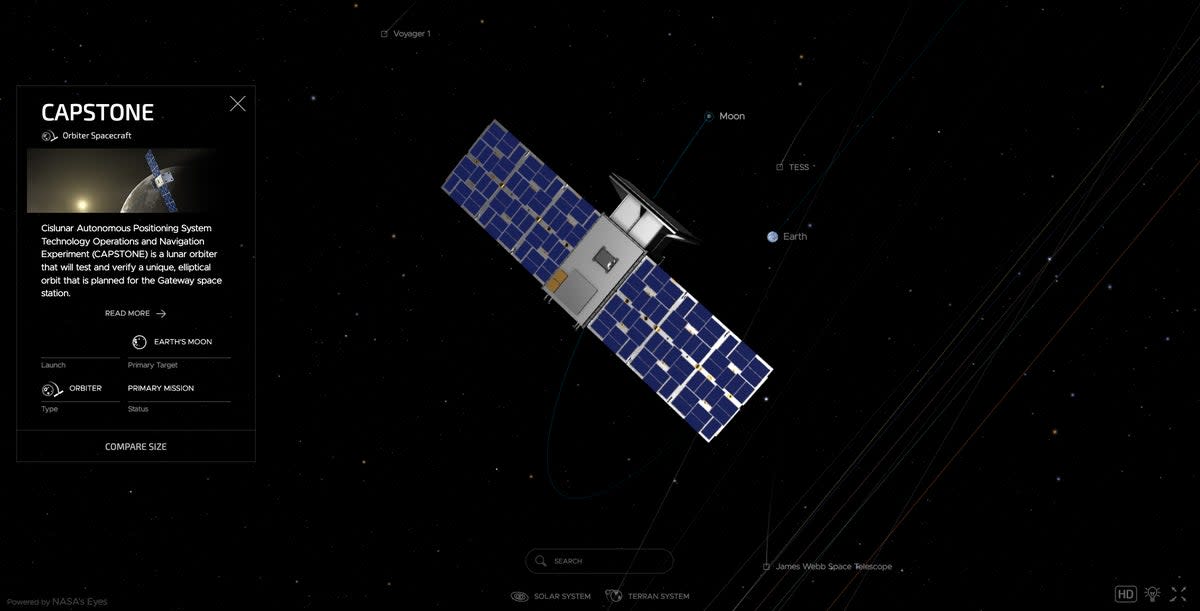Why Nasa’s Capstone satellite is flying a weird path to the Moon

Nasa’s Capstone mission successfully separated from its launch vehicle Monday morning, setting the 55-pound small satellite on a trajectory to rendezvous with the Moon later this year.
Capstone, or the Cislunar Autonomous Positioning System Technology Operations and Navigation Experiment, launched atop a Rocket Labs Photon rocket from New Zealand on 28 June, and successfully separated from the rocket’s upper stage on Monday morning. The small spacecraft will take four months to reach the Moon, arriving at its lunar orbit on 13 November.
MISSION UPDATE: Separation success!
Our #CAPSTONE spacecraft has released from @RocketLab’s Photon upper stage and started its solo journey to the Moon. The pathfinder is scheduled to arrive at its lunar orbit on Nov. 13.
Learn more: https://t.co/hAkb461nmg pic.twitter.com/hDbeQ1XHQu— NASA Ames (@NASAAmes) July 4, 2022
Unlike the Apollo or upcoming Nasa Artemis missions to the Moon, Capstone will not fly directly to lunar orbit, but will instead take a very circuitous — but highly efficient — route that will see it fly far beyond the Moon’s orbit. Known as a ballistic lunar transfer, Capstone’s route will see it reach a distance of 963,00 miles from Earth, three times the distance of the Moon, before the Sun’s gravity pulls it back at just the right velocity to enter orbit around the Moon.
Capstone’s orbit is also unusual.
Known as a near rectilinear halo orbit, Capstone’s orbit will inscribe an elongated oval around the Moon, such that the sides are almost flat. The Moon will also occupy one corner of the oval, rather than sitting in the center — this will allow Capstone to fly at low altitude over the lunar South pole, the site of future Artemis mission activities.
Capstone is trailblazing the near rectilinear halo orbit in preparation for Nasa’s Gateway, a space station envisioned as a way station for Artemis astronauts flying to and from the lunar surface. Nasa plans to land humans on the Moon again with the Artemis III mission in 2025, with additional missions flying through the end of the decade.
In the meantime, those interested can track Capstone’s progress using Nasa’s interactive Eyes on the Solar System modelling application.

